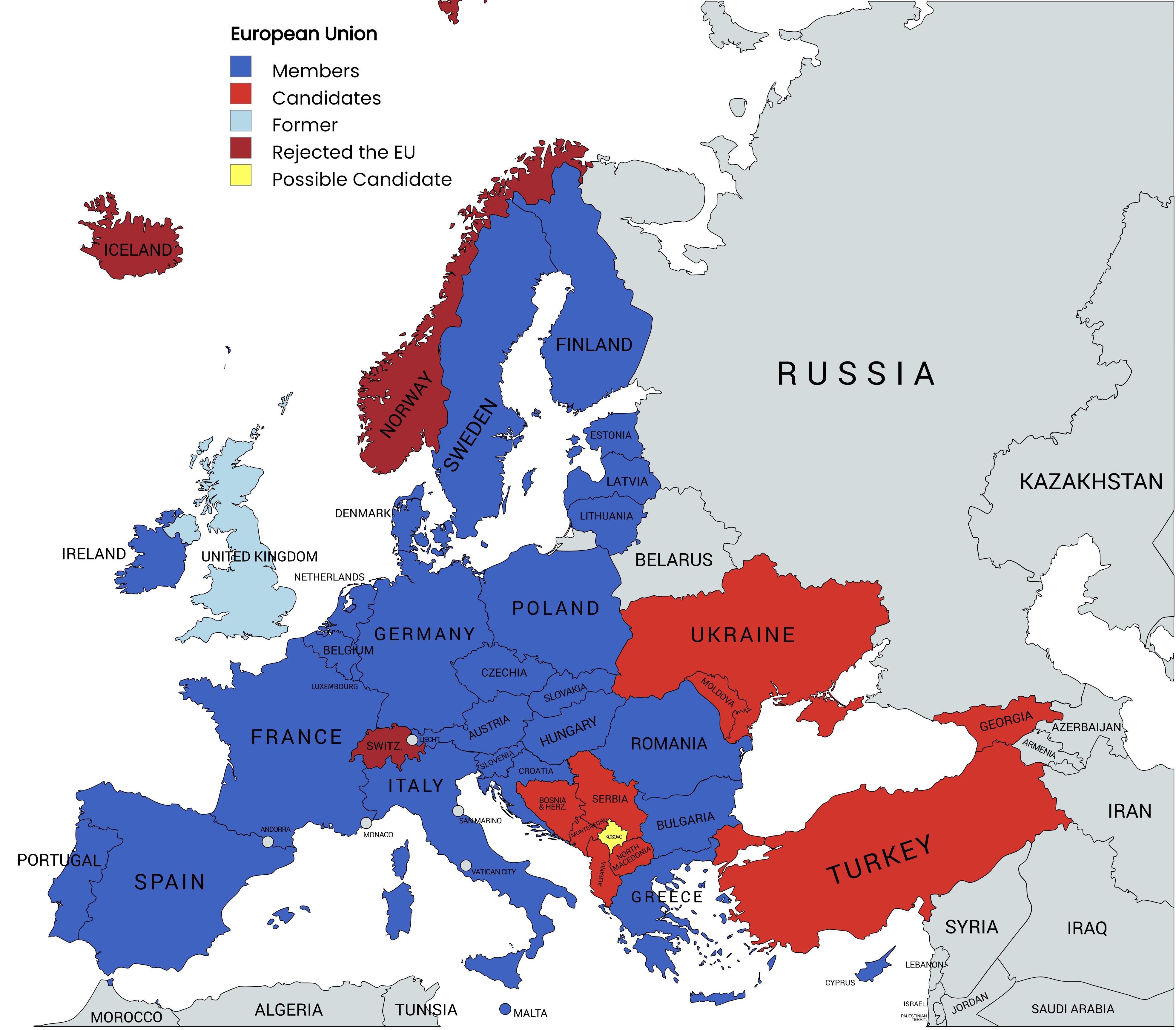Map of the European Union Member Countries


Alex Cartwright
Senior Cartographer & GIS Specialist
Alex Cartwright is a renowned cartographer and geographic information systems specialist with over 15 years of experience in spatial analysis and data...
Geographic Analysis
What This Map Shows
The "Map of the European Union Member Countries" provides a clear visual representation of the countries that are part of this significant political and economic union. The map delineates the boundaries of the EU member states, showcasing not only their geographical locations but also the intricate relationships that characterize this unique alliance. The European Union was established to foster economic cooperation, promote peace, and enhance stability across Europe, and this map serves as a snapshot of the current composition of the union.
Deep Dive into the European Union
The European Union, often abbreviated as the EU, is a political and economic union of 27 European countries that are located primarily in Europe. Established by the Maastricht Treaty in 1993, the EU has evolved into a complex entity that governs various aspects of life ranging from trade and travel to environmental policies. Have you ever wondered why some countries chose to join while others opted out?
The most notable aspect of the EU is its single market, which allows for the free movement of goods, services, capital, and people. This integration has resulted in significant economic benefits for member states, with the EU being one of the largest economies in the world. According to recent data, the EU's GDP is approximately $15 trillion, representing around 15% of the world's total GDP.
Interestingly, the EU is also known for its diverse cultural landscape. Each member country brings its own unique traditions, languages, and histories, which contribute to the rich tapestry of European culture. For instance, Italy’s renowned culinary heritage, France’s artistic contributions, and Germany’s engineering prowess each add to the collective identity of the EU.
Moreover, the EU operates with a range of institutions, including the European Parliament, the European Commission, and the European Council, all of which play essential roles in decision-making processes. The interplay between these institutions ensures that the diverse interests of member states are represented and addressed. It’s fascinating to consider how this complex governance structure facilitates cooperation among countries with vastly different political systems and economic structures.
Regional Analysis
Diving deeper into the map, we can analyze the regional dynamics within the EU. Western Europe, which includes countries like France, Germany, and the Netherlands, is often considered the economic powerhouse of the union. These nations not only contribute significantly to the EU’s GDP but also influence its policies due to their size and economic weight. For example, Germany, as the largest economy in Europe, plays a crucial role in shaping fiscal policies and economic strategies.
In contrast, Southern Europe, comprising nations like Spain, Italy, and Greece, has faced various economic challenges, particularly during the eurozone crisis. The disparities in economic performance between Western and Southern Europe have led to ongoing debates about financial solidarity and support mechanisms within the EU. Interestingly, Northern Europe, with countries such as Sweden and Denmark, tends to have robust economies and high living standards, often serving as models for social welfare policies.
Eastern Europe, represented by nations like Poland, Hungary, and the Czech Republic, has seen significant growth since joining the EU. These countries have benefited from access to the single market and EU funding, which has helped boost their economies and improve infrastructure. However, challenges such as political tensions and differing attitudes towards EU policies can create friction within the union.
Significance and Impact
Understanding the composition of the European Union is not just an academic exercise; it has real-world implications. The EU plays a critical role in global trade, international relations, and environmental efforts. For instance, the EU’s commitment to climate change initiatives, such as the European Green Deal, seeks to make the continent carbon-neutral by 2050, setting an example for other regions.
Moreover, the ongoing discussions about expansion and the potential inclusion of new member states, such as those in the Western Balkans, raise questions about the future of the EU. Will the union continue to grow, or will it face challenges that hinder further integration? As the world becomes increasingly interconnected, the dynamics within the EU will undoubtedly influence global politics and economics.
In conclusion, the "Map of the European Union Member Countries" is more than just a geographical representation; it encapsulates a complex interplay of culture, economics, and politics. By understanding the significance of this map, we can better appreciate the challenges and opportunities facing Europe today.
Visualization Details
- Published
- October 12, 2025
- Views
- 50
Comments
Loading comments...